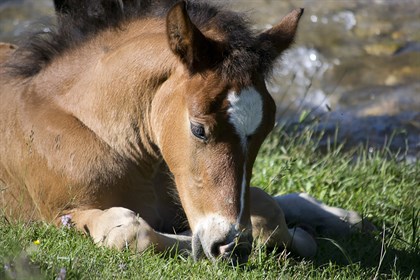
This article has appeared previously with Equestrian Life. To read our current digital issue, click here.
It is important to have first aid essentials on-hand.
Question: What are the top 10 things I should have in my first aid kit?
By Dr Maxine Brain
Answer: It’s hard to limit it to just 10 things so I am listing 10 medical items for your first aid box, and then taking poetic licence and adding 10 things that aren’t medical but are a must to have at hand in an emergency. And don’t forget to include your vet’s emergency contact details in both kits!
FIRST AID KIT ESSENTIALS
MEDICAL
1. Thermometer - always great to be able to tell your vet what a horse’s temperature is if “he’s just not right”.
2. Stethoscope - very useful if used properly to obtain a heart rate (and, if experienced, gut noises) which can be relayed to the vet to help ascertain how urgently the horse requires attention.
3. Sterile saline - great for flushing eyes if something is in them or the eye is damaged. Can be used to flush some wounds.
4. Gauze swabs/pads - for wiping small wounds and applying to wounds under bandages.
5. Cotton wool or Gamgee Tissue rolls - to wrap leg wounds and as supportive dressing for injured limbs.
6. Elastoplast or Vetwrap - for bandages, can be particularly important for bleeding wounds.
7. Antiseptic solution - iodine or chlorhexidine to dilute with water and clean contaminated wounds.
8. Antiseptic cream or powder - to apply topically to wounds.
9. Electrolyte replacer - very helpful for dehydrated or stressed horses.
10. Animalintex - great for puncture wounds or hoof abscesses.
NON-MEDICAL
1. Headstall and lead.
2. Scissors.
3. Wirecutters.
4. Torch (and batteries).
5. Gloves - either sterile gloves or latex gloves for improved hygiene for both horse and human.
6. Clean water - 5-litre container of fresh water has a multitude of uses.
7. Bucket.
8. Towel - useful for laying a horse’s head on if down.
9. Twitch - sadly, even some seriously injured horses still require some form of restraint to be able to treat them.
10. Permanent marker - to mark puncture wounds or hoof areas where nails/wire may have been pulled from.
READ THE LATEST NEWS ARTICLES HERE
https://www.equestrianlife.com.au/articles/Ask-the-vet-First-aid-kits
